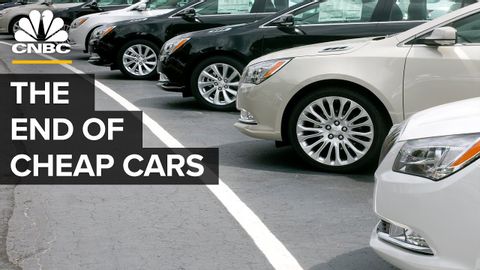为什么廉价汽车不见了(Why Cheap Cars Are Disappearing)
joey joey 發佈於 2021 年 05 月 14 日  沒有此條件下的單字
沒有此條件下的單字US /ˈɑbviəs/
・
UK /ˈɒbviəs/
- adj.明顯的;顯而易見的 ;顯而易見的;明目張膽的
US /ˈslaɪtli/
・
UK /ˈslaɪtli/
US /ˈbesɪkəli,-kli/
・
UK /ˈbeɪsɪkli/
- n. (c./u.)條件;條款;期間;期限;學期;術語;關係;項;妊娠期;任期
- v.t.命名

